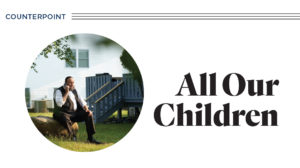Buried Treasure


Photos: Menachem Kalish
When Hurricane Sandy struck the East Coast of the United States in 2012, the massive storm caused billions of dollars of damage and forced thousands of people from their homes.
Among the areas inundated with flood waters were Jewish neighborhoods in Queens and Long Island, where life was interrupted for weeks. Once the storm subsided, the community could assess the totality of the damage: In addition to destroyed homes and waterlogged belongings, 30,000 seforim, tefillin, talleisim, and five sifrei Torah, weighing an estimated 80 tons, had been ruined. All of it required burial.
At first, the community paid a hefty price to a trucking company to haul away the damaged goods. But then a giving soul offered his transportation service and, over a three-week period, seforim and other holy objects were buried in a hole that measured 12-feet wide by 120-feet long and 15-feet deep in upstate Woodridge, New York.
A huge sheimos burial operation like that doesn’t happen every day, but it shows just how much emphasis is placed on the proper burial of holy objects. Every day, in shuls across the world, people drop seforim, leaflets, and parshah sheets into sheimos bins, not giving a second thought to what happens next. We were curious to find out what does, so we talked to sheimos operators in Lakewood, upstate New York, and Israel about their trade.
More than a Hole in the Ground
Technically, a person can dig a hole in his or her own backyard and bury seforim and other ritual objects as long as they are double wrapped in a plastic bag. However, sifrei Torah, tefillin, and mezuzahs possess a higher level of sanctity and require a special form of burial.
Aaron Taplin, the owner of Capitol Seforim outside Lakewood, New Jersey, who also runs 1-866-SHAIMOS, says that simply putting sheimos in the ground doesn’t necessarily guarantee that they’ve been buried properly.
“If you put a page into the ground and it disintegrates in ten years that’s not a problem,” he says. “But if you put it into a situation that the halachah considers destruction, for example into ground that has a high water table, or together with other items that would cause the sheimos to disintegrate faster, you are not burying correctly. That’s why you have to double wrap them and put them in a place that will be in accordance with government regulations to insure they won’t have to be dug up. Our sheimos are buried both legally and halachically.”
Over the years, numerous rabbanim have come to inspect Taplin’s sheimos operation, which has a hechsher from Satmar, his biggest customer, and another from Rabbi Shlomo Zalman Friedman, known as the Santov Rav of Lakewood.
Between Purim and Pesach, when people are cleaning up before the holiday, Taplin receives truckloads of sheimos, mostly from institutions like Chabad, Satmar, Skver, Vizhnitz, and Yeshiva University. He also gets trailer loads from as far away as Chicago.
In addition to burial, Aaron offers a home clean-out service, typically after someone has died or a family is preparing for a move. He buys the seforim that he can sell and charges a fee to bury the rest. Over the years, he’s salvaged and sold thousands of holy books. “We are preserving them and giving them a new home,” he says.
(Excerpted from Mishpacha, Issue 740)
Oops! We could not locate your form.













